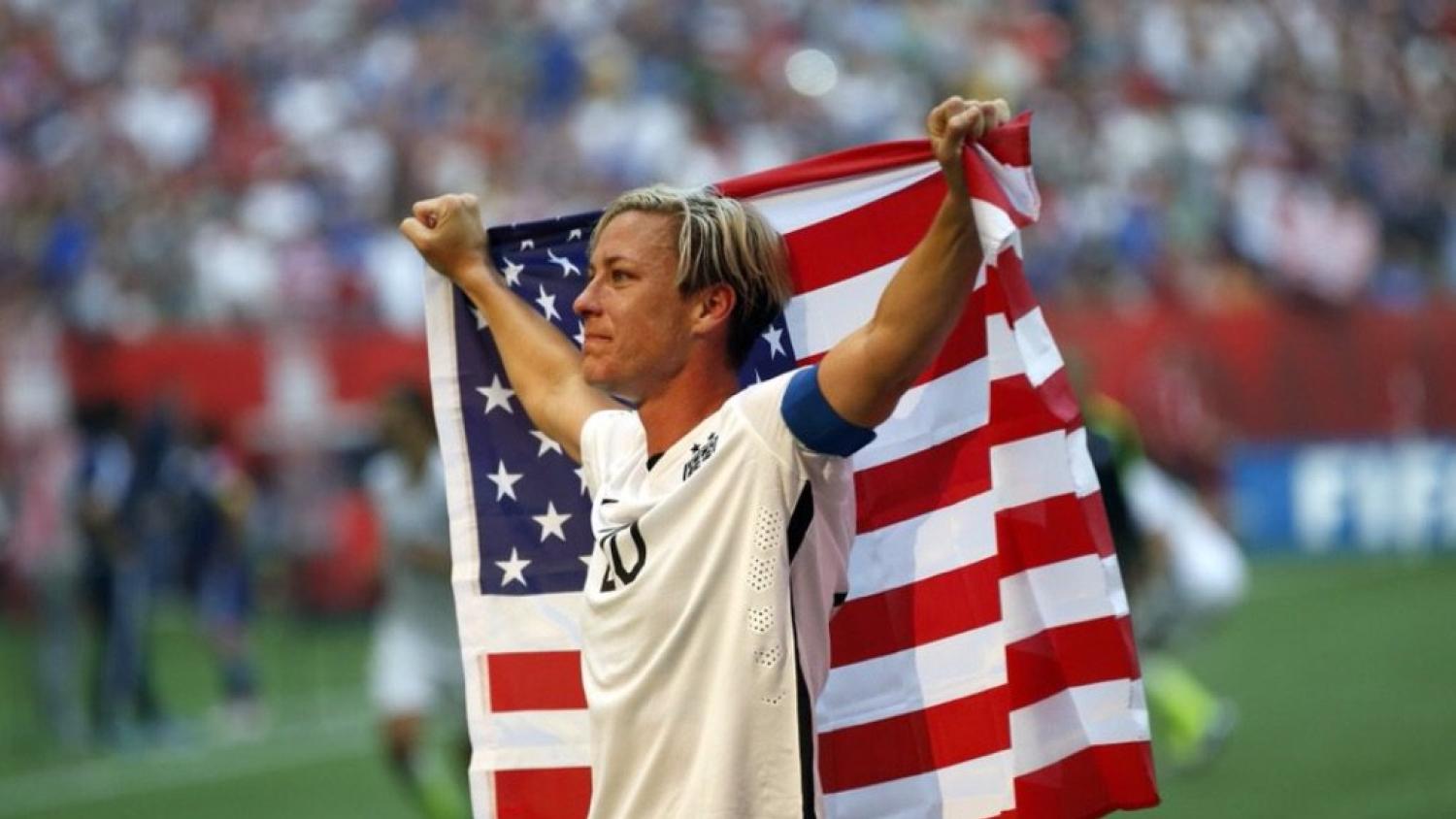With three World Cup titles and four Olympic gold medals, the U.S. Women’s National Team boasts an impressive history. Many players have contributed to the team’s accomplishments, but I’m attempting to narrow the focus to assemble an all-time roster. Soccer writers and historians voted on an all-time starting XI a few years ago, but this list will also include seven substitutes to simulate a roster during a major tournament.
Some excellent players were left off of this list, which does not necessarily include the 18 best players. When deciding between players of similar ability and skill, their positional fit for this specific team was taken into consideration. Although the team’s formation has changed throughout the years, going with a 4-3-3 (the team’s formation during its 1999 World Cup run) gets the best talent on the field.
Finally, when considering which bench players to include, I valued versatility, durability and peak performance. Being able to fill in at multiple positions is important, and I’m assuming that each player is in the middle of her prime.
Head Coach: Tony Dicicco
Dicicco is the USWNT all-time leader in wins (103) and the team’s only coach to win a World Cup and Olympics. He also has the highest points/match total (2.66), just outpacing Pia Sundaghe (2.64).
Starting XI (4-3-3)
GK: Hope Solo
Solo is the only goalkeeper, man or woman, to record 100 shutouts in international competition. Although she has created distractions off the field, she’s the most talented keeper in USWNT history.
Left Back: Brandi Chastain
Remembered for her celebration after converting the clinching penalty kick in the 1999 World Cup Final, Chastain scored 30 goals and added 26 assists in 192 games for the senior team. She split time between midfield and defense, making her a legitimate attacking threat as a fullback.
Center Back: Christie Rampone
She’s second all-time in caps with 311 and the only player who was on both the 1999 and 2015 World Cup rosters. It’s easy to imagine her wearing the captain’s arm band for this squad.
Center Back: Carla Overbeck
Overbeck was a mainstay in the USWNT defense during the 90s, her career bookended with two World Cup titles. She played every minute during the 1996 Olympic gold medal run and 1999 World Cup.
Right Back: Joy Fawcett
Sixth all time in caps (241), Fawcett scored 27 goals as a true defender. She was an anchor for the USWNT for almost two decades, winning two World Cups and two Olympics.
Left midfield: Kristine Lilly
Lilly perhaps had the most prolific career in USWNT history, scoring 130 goals in 354 appearances. She competed in 5 World Cups and 3 Olympics and scored 12 times in those tournaments. However, her greatest contribution to the team was a vital save on the goal line that kept the 1999 World Cup Final tied during extra time. Had she not gotten her head on the shot, China would’ve won the World Cup.
Center midfield: Michelle Akers
Akers is arguably the greatest women’s player of all time, at least during her peak years. Her single season performance in 1991 included 39 goals in 26 games and a 1991 World Cup title. Akers thrived as a midfielder later in her career, although it’s hard not to play the “what if” game with her. She suffered from chronic fatigue syndrome throughout most of the 90s, and she had to adjust accordingly with her level of training and play.
Right midfield: Julie Foudy
Foudy was a great all-around player on the USWNT during the 90s and early 2000s. She ranks fourth all time in caps (274) and fifth in assists (55).
Left forward: Tiffeny Milbrett
Milbrett was a 5’2” dynamo who earned a reputation as the hardest working player on the pitch. She’s one of five players to score 100 goals for the USWNT. The other four are all starting with her on this team.
Center forward: Abby Wambach
Wambach’s the all-time leading scorer in USWNT history with 184 goals, 77 of which were headers. She’s the ultimate center forward, dangerous on any cross into the box. Following the retirement of most of the stars from the 1999 World Cup team, Wambach led the next generation of players admirably. Her selflessness was on full display during the 2015 World Cup, when she yielded playing time to younger players who were in a better position to help the team win.
Right forward: Mia Hamm
Most pundits would pick among Hamm, Wambach, and Akers to determine the best USWNT player of all time. Few would argue which player’s off-field impact was greatest. Hamm transcended the game as a symbol for women in sports, and she did more than back it up on the field to the tune of 158 goals in 276 matches.
Substitutes:
Alex Morgan
Morgan was the toughest to leave out of the starting XI, but the deciding factor is her speed. Already known for scoring clutch goals late in games, Morgan, perhaps better than any player on this team, could exploit a tired defense. At just 27, she’s scored 73 goals in 125 games with the senior team.
Carli Lloyd
Lloyd seemingly gets better with age. She’s scored 61 of her 97 goals with the USWNT since she turned 30, in part a result of her playing in a more attacking role under current head coach Jill Ellis. Lloyd could make an impact off the bench as either a forward or attacking midfielder.
Becky Sauerbrunn
The only true defensive substitute on this team, one could make a case that Sauerbrunn deserves to start at center back. She played every minute of the 2015 World Cup, and even at 31 she figures to remain a fixture in the lineup for the next slate of major competitions.
Carin Jennings-Gabarra
Jennings-Gabarra played a vital role in the inaugural World Cup in 1991, scoring six goals throughout the tournament. Her hat trick against Germany in the semifinal showed her penchant for delivering in big moments. She also appeared as a substitute four times throughout the USWNT gold medal run at the 1996 Olympics.
Lauren Holiday
Holiday brings the most versatility off the bench. She played most of her career in a more defensive role than her natural position as an attacking midfielder, and she was one of the most consistent performers at the 2012 Olympics and 2015 World Cup.
April Heinrichs
Heinrichs scored 35 goals in just 46 matches, and she starred in the 1991 World Cup. She also coached the USWNT to a gold medal at the 2004 Olympics, and she currently serves as its technical director. From day one Heinrichs has been an essential part of the women’s team.
Brianna Scurry
Scurry was the keeper for the USWNT iconic 1999 World Cup run, staving off one penalty in the shootout against China. Leaving her out of the starting lineup says more about Hope Solo’s prolific career than any shortcoming of Scurry’s.





